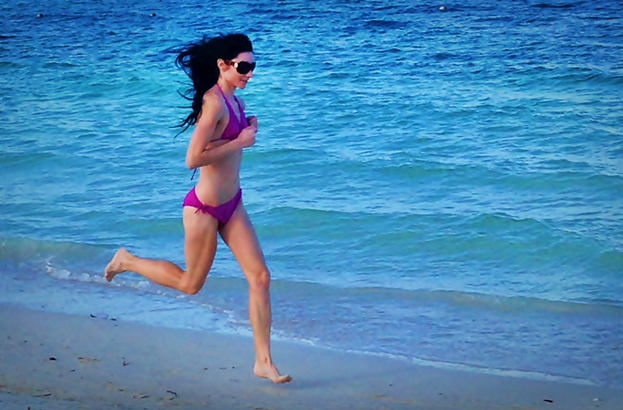Running barefoot makes you a better forefoot runner by enhancing global plantar awareness to reduce the propagation of shock-waves by eliminating the impact transients of the ground reaction force.
A misconception is that the lower leg is fragile, yet habitual barefoot runners naturally utilize the forefoot running technique to shield the lower extremity from damage.

Running Barefoot Makes you a Better Forefoot Runner
The idea that running barefoot improves running performance was conceived based on past studies that showed habitual shod-runners who were heel strikers, became more economical and adopted a forefoot strike when running barefoot for the first time. Why?
- the added mass of a clunky running shoe weighed the runners down
- running barefoot enhanced foot strike mechanics which lowered impact and allowed for a smoother, safer interaction with the ground
Such discoveries led researchers to believe than running on the forefoot while barefoot is more comfortable than landing on the heel as heel striking is associated with poor shock attenuation, greater heel pressures, and abnormal distribution of plantar pressures
Another study by Baroody at the University of New Hampshire, found that shod runners who underwent a 10-week barefoot running training program showed a decrease in VO2 max, indicating that running barefoot required less oxygen uptake.
- in addition, the trained barefoot runners were better able to convert metabolic energy to mechanical energy which may have enhanced endurance capacity
But, to reap the full economic benefits of running barefoot, you must do it properly!
The Take Home Message
The source of many running injuries stems from the rapid impacts of heel strike running. Heel strikers suffering persistent injuries could benefit from forefoot running as the impact reduction accompanied in a forefoot strike protects and preserves bone, joint, and tissue health.
Keep in mind that you do not have to become a full-time barefoot runner to see performance gains.
Minimalist runners can benefit greatly from barefoot running drills such as short 2 to 3 minute intervals of barefoot running at various speeds. However, the key to avoiding injury when running barefoot is the right amount of exposure by avoiding the too much too soon mindset.
More on The Heel Strike / Forefoot Strike Debate:
- Is Forefoot Running Dangerous?
- Heel Strike Running vs Forefoot Strike Running
- What Causes a Runner to Heel Strike?
- Heel Strike Running Deforms Heel Pad Causing Heel Pain and Lower Leg Injury
References:
Nunns et al. Biomechanical characteristics of barefoot footstrike modalities. J Biomech, 2013; 46(15):2603-10.
Robbin, SE and Gouw, GJ. Athletic footwear: unsafe due to perceptual illusions. Med Sci Sports Exerc, 1991; 23(2):217-24.
Bretta Riches
BSc Neurobiology; MSc Biomechanics candidate, ultra minimalist runner & founder of RunForefoot. I was a heel striker, always injured. I was inspired by the great Tirunesh Dibaba to try forefoot running. Now, I'm injury free. This is why I launched Run Forefoot, to advocate the health & performance benefits of forefoot running and to raise awareness on the dangers of heel striking, because the world needs to know.
Latest posts by Bretta Riches (see all)
- Heel Strike Running Causes Slipped Discs - 25/04/2024
- How to Train Yourself to Not Heel Strike When Running - 24/04/2024
- Cushioned Running Shoes Found to Be Bad for Ankles - 23/04/2024

Leave a Reply